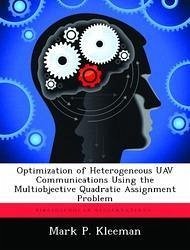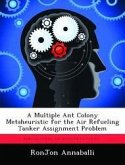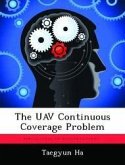The Air Force has placed a high priority on developing new and innovative ways to use Unmanned Aerial Vehicles (UAVs). The Defense Advanced Research Projects Agency (DARPA) currently funds many projects that deal with the advancement of UAV research. The ultimate goal of the Air Force is to use UAVs in operations that are highly dangerous to pilots, mainly the suppression of enemy air defenses (SEAD). With this goal in mind, formation structuring of autonomous or semiautonomous UAVs is of future importance. This particular research investigates the optimization of heterogeneous UAV multichannel communications in formation. The problem maps to the multiob jective Quadratic Assignment Problem (mQAP). Optimization of this problem is done through the use of a Multiob jective Evolutionary Algorithm (MOEA) called the Multiob jective Messy Genetic Algorithm II (MOMGAII). Experimentation validates the attainment of an acceptable Pareto Front for a variety of mQAP benchmarks. It was observed that building block size can affect the location vectors along the current Pareto Front. The competitive templates used during testing perform best when they are randomized before each building block size evaluation. This tuning of the MOMGAII parameters creates a more effective algorithm for the variety of mQAP benchmarks, when compared to the initial experiments. Thus this algorithmic approach would be useful for Air Force decision makers in determining the placement of UAVs in formations.
Hinweis: Dieser Artikel kann nur an eine deutsche Lieferadresse ausgeliefert werden.
Hinweis: Dieser Artikel kann nur an eine deutsche Lieferadresse ausgeliefert werden.








